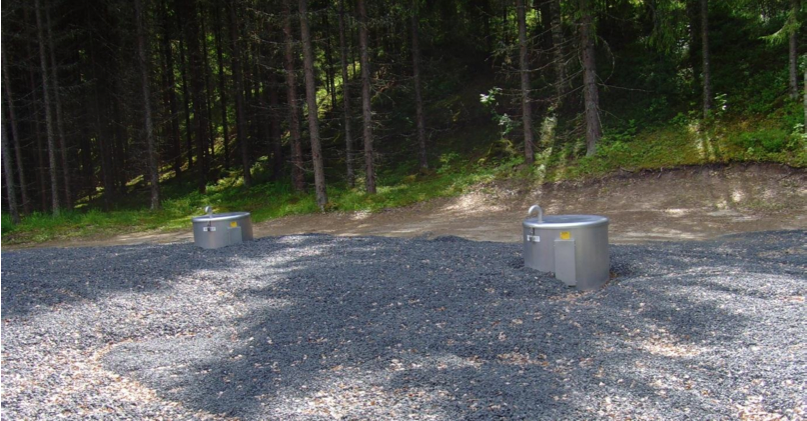
Satellite wells of the Elverum groundwater works. Source: Ahmad (2012)
Less than 10% of the water supply in Norway is from groundwater (see also groundwater sources). Elverum groundwater works were one of the first larger municipal waterworks utilising groundwater in Norway. The raw water is of good quality, but has high concentrations of iron (see also pathogens and contaminants). The Vyredox method is used to reduce iron.
Iron and Manganese Removal from Groundwater
The issue of higher concentrations of iron and manganese in groundwater wells at Grindalsmoen in Elverum Municipality in the south eastern part of Norway has been investigated by a PHREEQC geochemical model. Results proved that concentration of oxygen at the water works (at its corresponding partial pressure) is high enough to precipitate the level of iron and manganese found in groundwater.
AHMAD, M. (2012): Iron and Manganese Removal from Groundwater. Geochemical Modeling of the Vyredox Method. Oslo: University of Oslo URL [Accessed: 03.01.2013]Vyredox - In Situ Purification of Ground Water
The abundance and relative purity of ground water guarantees its increase in usage. In some localities, the content of iron and manganese in ground water is so high that these metals must be removed before the water can be used for drinking or industrial purposes. The Vyredox method developed in Finland and used now also in Sweden and some other countries oxidises the ferrous ion (which is soluble in water) to the ferric ion (which is insoluble), before the water enters the well, making use of iron-oxidizing bacteria and aeration wells.
HALLBERG, R.O. ; MARTINELL, R. (2006): Vyredox - In Situ Purification of Ground Water. In: Ground Water: Volume 14 , 88-93. URL [Accessed: 21.11.2012]


